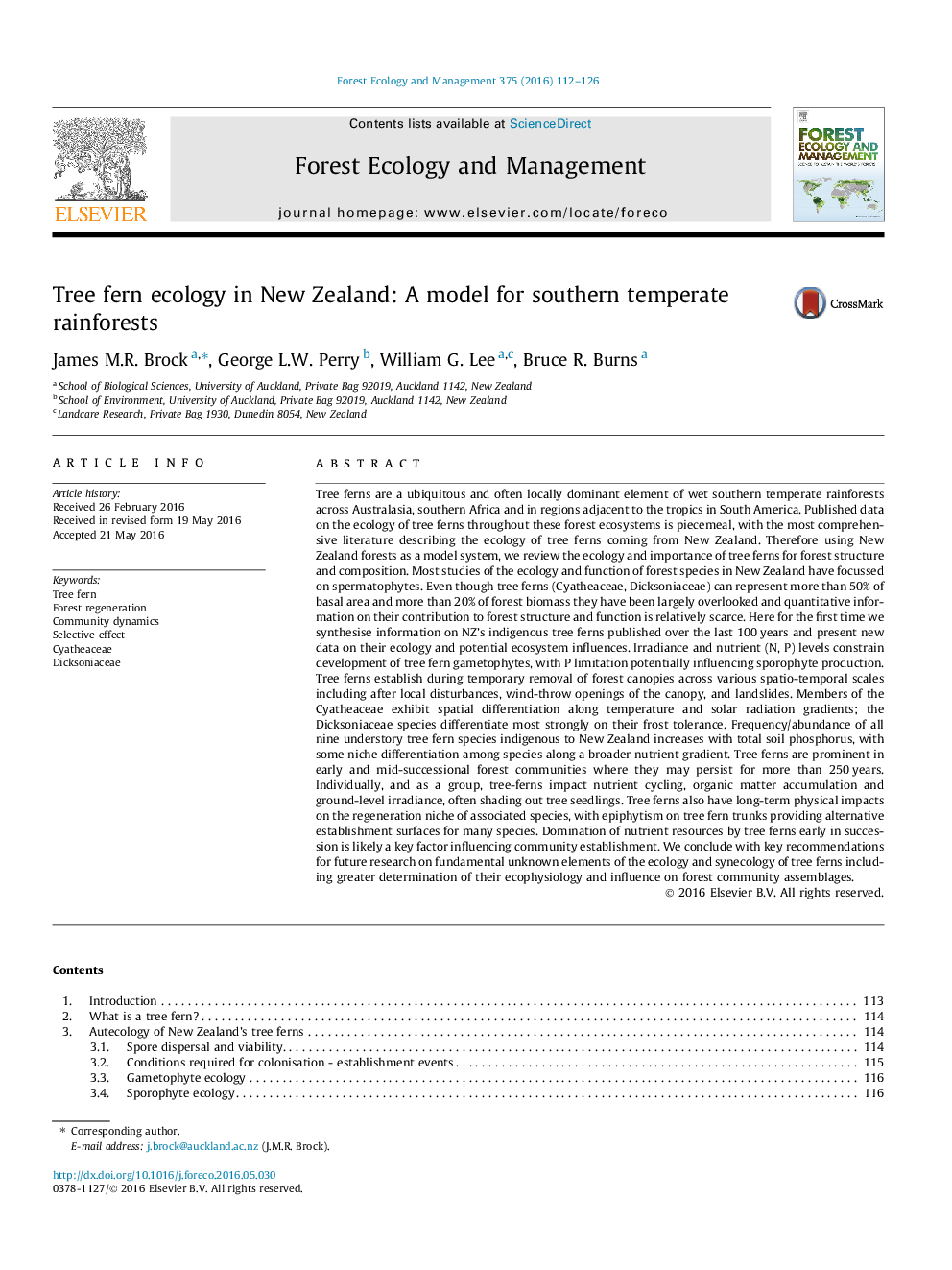| Article ID | Journal | Published Year | Pages | File Type |
|---|---|---|---|---|
| 6542158 | Forest Ecology and Management | 2016 | 15 Pages |
Abstract
Tree ferns are a ubiquitous and often locally dominant element of wet southern temperate rainforests across Australasia, southern Africa and in regions adjacent to the tropics in South America. Published data on the ecology of tree ferns throughout these forest ecosystems is piecemeal, with the most comprehensive literature describing the ecology of tree ferns coming from New Zealand. Therefore using New Zealand forests as a model system, we review the ecology and importance of tree ferns for forest structure and composition. Most studies of the ecology and function of forest species in New Zealand have focussed on spermatophytes. Even though tree ferns (Cyatheaceae, Dicksoniaceae) can represent more than 50% of basal area and more than 20% of forest biomass they have been largely overlooked and quantitative information on their contribution to forest structure and function is relatively scarce. Here for the first time we synthesise information on NZ's indigenous tree ferns published over the last 100Â years and present new data on their ecology and potential ecosystem influences. Irradiance and nutrient (N, P) levels constrain development of tree fern gametophytes, with P limitation potentially influencing sporophyte production. Tree ferns establish during temporary removal of forest canopies across various spatio-temporal scales including after local disturbances, wind-throw openings of the canopy, and landslides. Members of the Cyatheaceae exhibit spatial differentiation along temperature and solar radiation gradients; the Dicksoniaceae species differentiate most strongly on their frost tolerance. Frequency/abundance of all nine understory tree fern species indigenous to New Zealand increases with total soil phosphorus, with some niche differentiation among species along a broader nutrient gradient. Tree ferns are prominent in early and mid-successional forest communities where they may persist for more than 250Â years. Individually, and as a group, tree-ferns impact nutrient cycling, organic matter accumulation and ground-level irradiance, often shading out tree seedlings. Tree ferns also have long-term physical impacts on the regeneration niche of associated species, with epiphytism on tree fern trunks providing alternative establishment surfaces for many species. Domination of nutrient resources by tree ferns early in succession is likely a key factor influencing community establishment. We conclude with key recommendations for future research on fundamental unknown elements of the ecology and synecology of tree ferns including greater determination of their ecophysiology and influence on forest community assemblages.
Related Topics
Life Sciences
Agricultural and Biological Sciences
Ecology, Evolution, Behavior and Systematics
Authors
James M.R. Brock, George L.W. Perry, William G. Lee, Bruce R. Burns,
